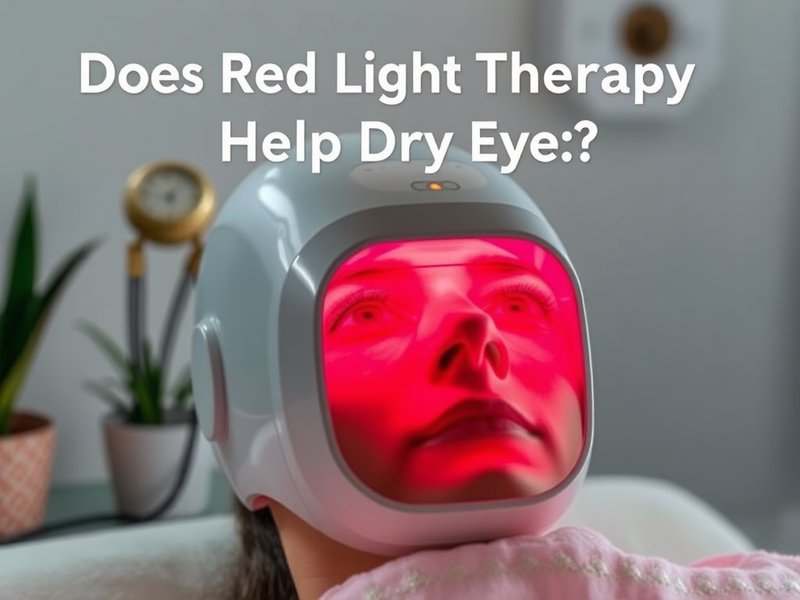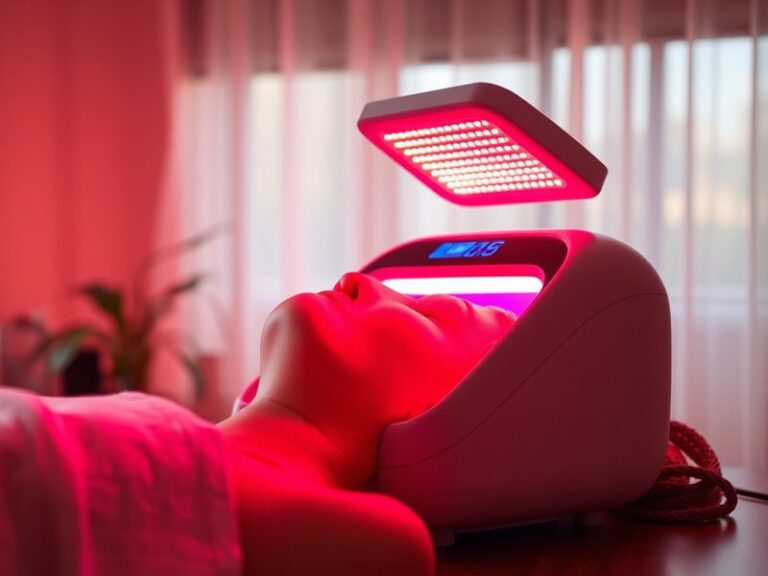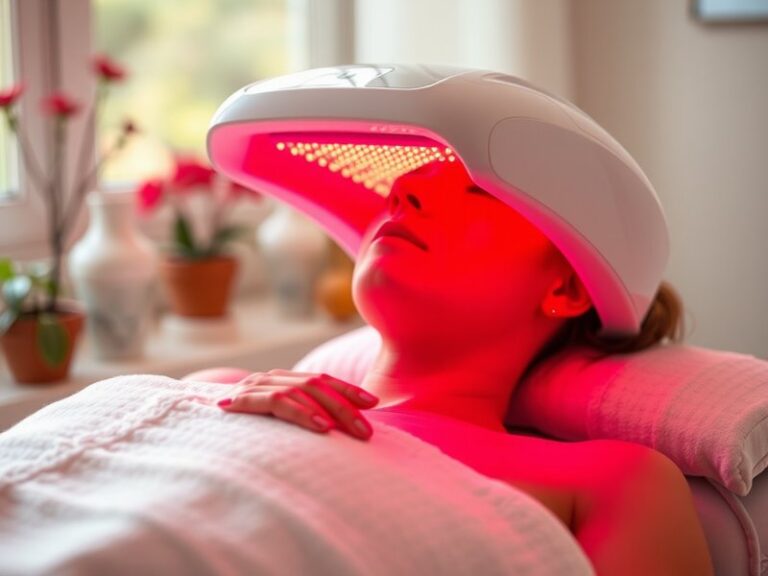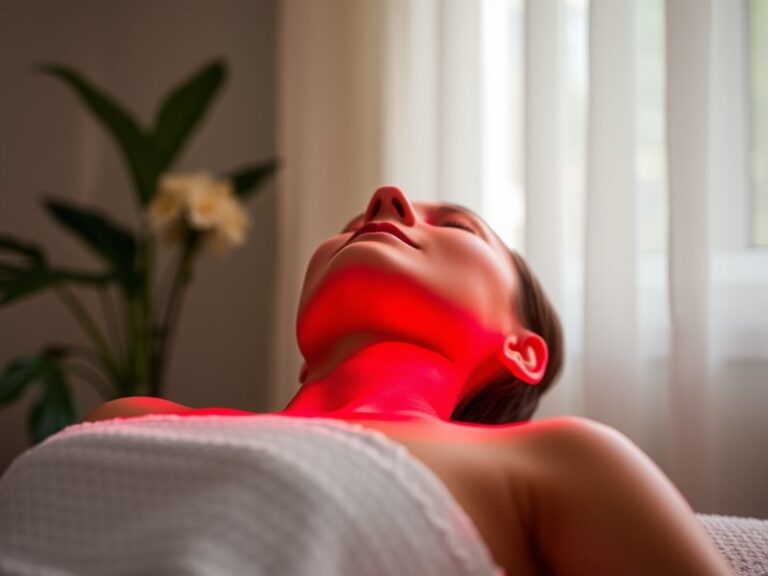Does Red Light Therapy Help Dry Eyes?
Does Red Light Therapy Help Dry Eyes?
Have you ever felt discomfort due to dry eyes, searching for effective solutions? With advancements in health technology, red light therapy has emerged as a potential remedy.
This article will explore the effectiveness of red light therapy in alleviating dry eyes, discussing the science behind it, its benefits, considerations, and alternative treatments. By the end, you should have a clear understanding of whether this therapy is a viable option for your dry eye concerns.
Key Takeaways
- Red light therapy may enhance tear production and improve eye comfort for those suffering from dry eyes.
- This therapy is non-invasive and generally considered safe, making it an appealing option for many patients.
- It is essential to consult with a healthcare professional to determine its suitability for individual cases of dry eyes.
What is Red Light Therapy?
Red light therapy (RLT) is a treatment modality that utilizes low-wavelength red light to penetrate the skin and promote healing on a cellular level. It is often used in various medical fields, including dermatology and physical therapy, thanks to its regenerative capabilities.
Background of Red Light Therapy
RLT operates on the principle that light can stimulate the body’s natural healing processes. This therapy is thought to improve cellular function, enhance circulation, and facilitate inflammation reduction, making it a potential treatment option for various conditions, including dry eyes.
What are the Benefits of Red Light Therapy?
Exploring the advantages of red light therapy reveals it may provide relief in multiple ways for dry eye sufferers.
Increased Tear Production
Studies suggest that RLT can stimulate the lacrimal glands, leading to increased tear production. This is vital for individuals experiencing dry eyes, as proper lubrication is essential for eye health.
Reduced Inflammation
For many people, dry eyes are accompanied by inflammation of the ocular surface. Red light therapy has anti-inflammatory properties, which can help soothe the eyes and reduce redness and discomfort.
Enhanced Healing of Ocular Tissues
The regenerative effects of red light therapy may also aid in the healing of damaged ocular tissues. This can help restore normal function and enhance comfort levels for those with chronic dry eye syndrome.
Improved Circulation to the Eye Area
Increased blood flow to the eyes can also be a benefit of RLT, bringing more essential nutrients and oxygen to the eye tissues, which can further support healing.
Is it Possible to Use Red Light Therapy for Dry Eyes?
Yes, red light therapy can be utilized as a treatment for dry eyes, and it is becoming an increasingly popular option. However, it should complement traditional treatments and not replace them without consulting a healthcare professional.
What are the Advantages of Using Red Light Therapy for Dry Eyes?
Utilizing RLT to manage dry eyes comes with several advantages.
Non-Invasiveness
Unlike surgical interventions, RLT is a non-invasive treatment that can be performed in a clinic or even at home with FDA-cleared devices, providing a sense of safety and convenience.
Discover our review on Pre-red light therapy application
Minimal Side Effects
RLT generally has few side effects compared to conventional medications, which often come with risks of adverse reactions.
Ease of Use
Red light therapy devices are accessible and not demanding to use, allowing individuals to incorporate them into their daily routines with ease.
What are the Disadvantages of Using Red Light Therapy for Dry Eyes?
While RLT presents advantages, it is essential to consider potential drawbacks as well.
Limited Availability of Research
Although promising, research regarding the efficacy of red light therapy specifically for dry eyes is still limited. More extensive studies are needed to establish its effectiveness conclusively.
Variability in Treatment Response
Not all individuals may respond similarly to RLT. Factors such as the severity of dry eyes and individual biological differences can impact treatment effectiveness.
Cost Considerations
While some devices are available for home use, quality RLT treatments can be costly, and insurance coverage may not always apply.
What are the Things to Consider Before Using Red Light Therapy for Dry Eyes?
Before starting red light therapy, several considerations should be evaluated to ensure safety and effectiveness.
Consultation with a Healthcare Professional
Always consult an eye care professional or healthcare provider before beginning any new treatment. They can provide personalized advice and help rule out underlying conditions.
Device Quality and Specifications
If using a home device, it’s crucial to ensure that it is FDA-approved and meets the necessary specifications for treating dry eyes effectively.
Individual Health Conditions
Consider any pre-existing health conditions or medications that may interact with RLT. Discussing these factors with a healthcare provider is essential.
What are the Alternatives to Red Light Therapy for Dry Eyes?
If red light therapy isn’t suitable for you, there are alternative options worth considering.
Artificial Tears and Lubricating Eye Drops
Over-the-counter artificial tears can help alleviate dry eye symptoms by providing moisture and lubrication, offering a quick and effective solution.
Punctal Plugs
These tiny devices can be inserted in the tear ducts to block drainage, helping retain tears on the ocular surface and preventing dryness.
Lifestyle Adjustments
Making small lifestyle changes, such as taking regular breaks from screens, using humidifiers, or adopting a diet rich in omega-3 fatty acids, can also contribute to improving dry eye symptoms.
Conclusion: Is it Recommended to Use Red Light Therapy for Dry Eyes?
In conclusion, red light therapy shows potential as a treatment option for dry eyes, offering benefits such as increased tear production and reduced inflammation. However, the variability in individual responses and the necessity for further research underscores the importance of consulting a healthcare provider before pursuing this therapy. Given its advantages and disadvantages, RLT may be an appropriate addition to an overall management strategy for dry eyes.
Frequently Asked Questions
Can anyone use red light therapy for dry eyes?
While RLT is generally safe, individuals with certain eye conditions or health concerns should consult with a healthcare professional before using it.
How long does it take to see results from red light therapy?
Results can vary. Some users may experience improvements in symptoms within a few sessions, while others may require more time for noticeable effects.
Is red light therapy painful?
No, red light therapy is non-invasive and typically painless. Most users report feeling a warm sensation during the treatment.
How often should I undergo red light therapy for dry eyes?
Frequency may depend on the severity of your condition and the advice of your healthcare provider. Generally, sessions may range from a few times a week to once a day.
Are there any side effects associated with red light therapy?
Although rare, some individuals may experience temporary redness or irritation in the treated area. Always consult with a professional if you experience adverse reactions.
Dive into Use lotion with red light therapy?






